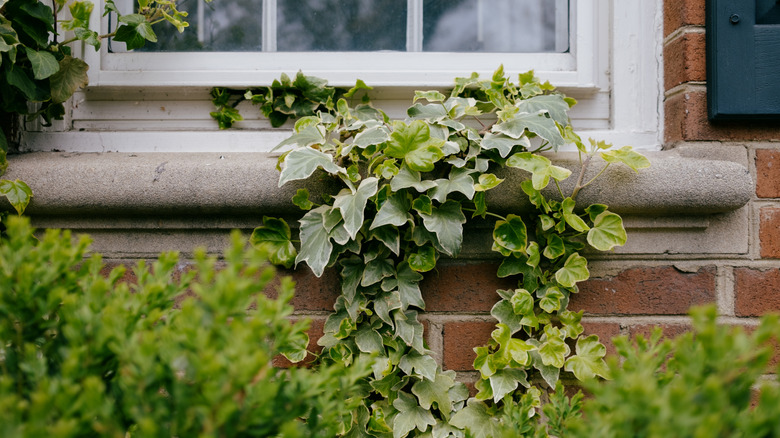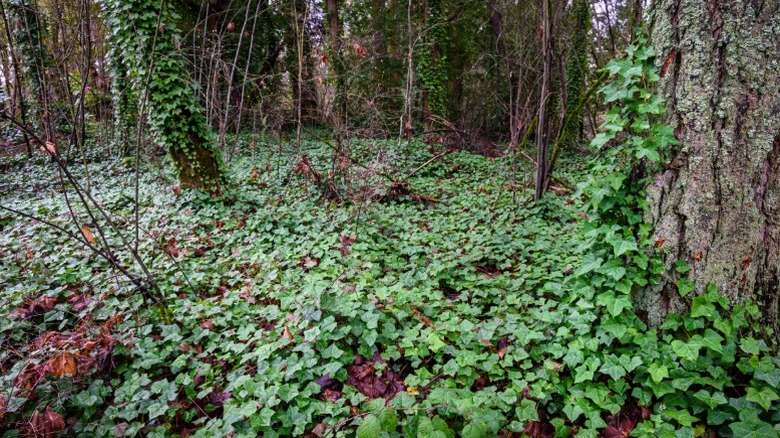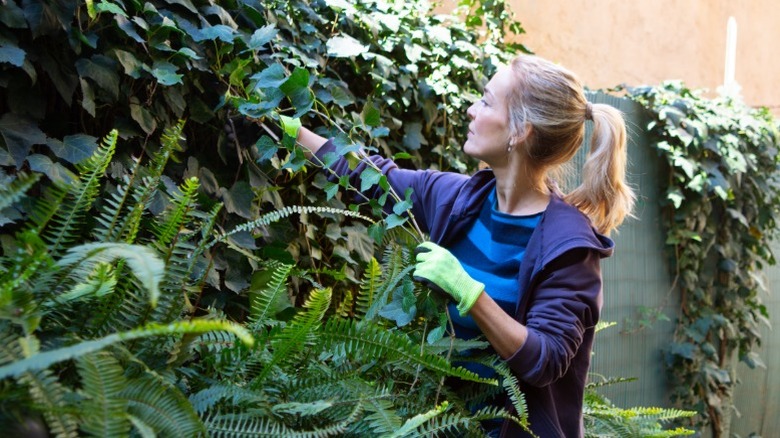What To Know About Washington State's New Ban On Common Ivy Plant Varieties
If you love the romantic look of ivy growing on the side of a home, it's best that you don't move to Washington state. First introduced to the U.S. by European immigrants in the late 1800s, English ivy (Hedera helix) and Atlantic ivy (Hedera hibernica) is now very widespread in the western half of Washington. However, according to the Washington State Department of Agriculture, the sale of both these common ivy varieties will be prohibited beginning Aug. 9. Prior to the ban, there were already many issues to keep in mind before growing English ivy in Washington state and elsewhere in the U.S. Oregon chose to add ivy to their noxious weed list in 2010, being the first state to change their policy on this invasive species.
Every year, Washington does a full review of its list of noxious weed list. The state allows locals to request a change to the list, which led to English ivy's status update. Prior to the change, these ivy varieties were classified as Class C noxious weeds by the Washington Noxious Weed Control Board in 2002, which reflects their widespread status in the state. However, its presence on the noxious weed list did not restrict selling or growing the plant in the state. With their addition to the quarantine list, selling or transporting these ivy varieties is prohibited under state laws. Placing these common varieties of ivy on the quarantine list means that the state government is attempting to limit further spread of this destructive plant in wild areas.
The reason Washington state is banning ivy plants
English and Atlantic ivy grows out of control across the Pacific Northwest and easily spreads by seeds eaten by birds. All instances of ivy in wild areas in Washington at one point escaped from landscaped areas. Many people plant these types of ivy because of the stunning look they can create, but ivy easily overtakes native plants and moves out of the bounds of yard plantings. Once established in a wild area, the ivy can end up wrapping around a tree and make it prone to falling down, especially during bad weather conditions. The result of the unhindered growth of ivy is fewer native habitats for wildlife and fewer native trees.
The banning of English ivy and other ivy species is a major win for several Washington state organizations, including Whatcom Million Trees Project, a major advocate for the ban. Instead of harmful English and Atlantic ivy, environmental organizations support the buying, selling, and cultivating of native species. And luckily, there are many good alternatives for invasive English ivy in your garden, depending on where you live in the U.S. If you reside in the Pacific Northwest, like in Washington or Oregon, consider growing kinnikinnick (Arctostaphylos uva-ursi) or slough sedge (Carex obnupta).
Impact of banning ivy varieties for Washington and beyond
What does a ban on English ivy mean for you? If you live in the state of Washington, prepare for some changes at your local garden store. As of Aug. 9, garden centers operating in Washington will no longer be able to legally sell English ivy or Atlantic ivy. Officially, the new status of ivy in the state prohibits the transport, buying, selling, or distribution of these plants. Businesses must destroy or remove them outside of the state to be compliant. Failure to follow new laws can result in fines for businesses who continue to distribute the plants within the state.
However, due to the fact that English ivy has already become naturalized in many places, property owners are not required to remove it from their yards. But if you want to learn how to get rid of English ivy if it takes over your garden, you can be part of the solution. While removing it can be a challenge, you can protect local ecosystems by pulling ivy plants out by the root. Even if you don't currently live in Washington state, you should pay attention when states update their quarantine lists. You do not want to unknowingly transport a banned species across state lines. And residents of other states should pay attention to the changes happening in the Pacific Northwest. English and Atlantic ivy are not only invasive in that area of the U.S., but have caused widespread ecological damage in multiple states.


